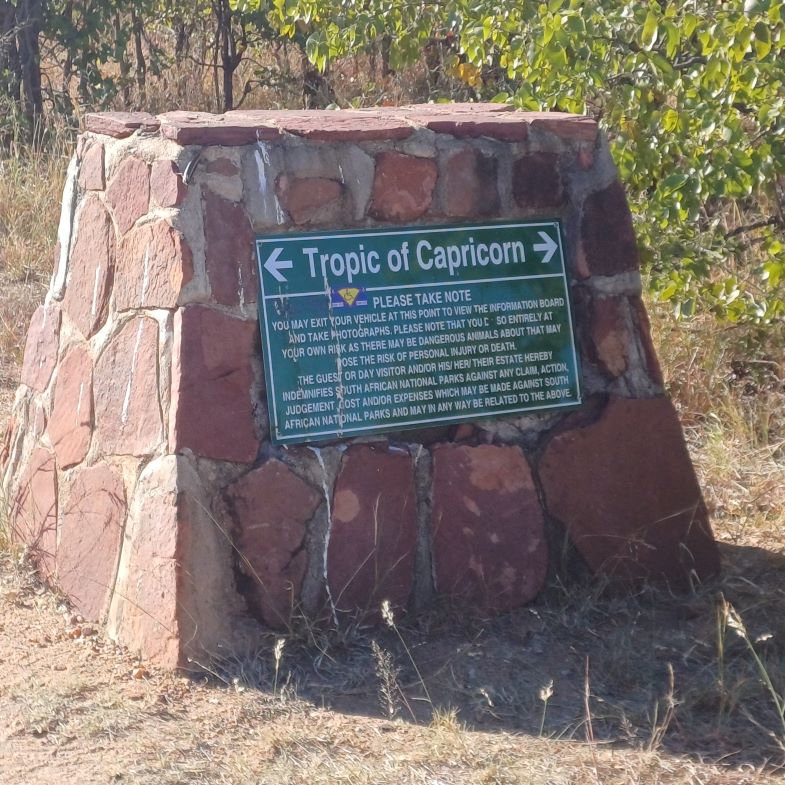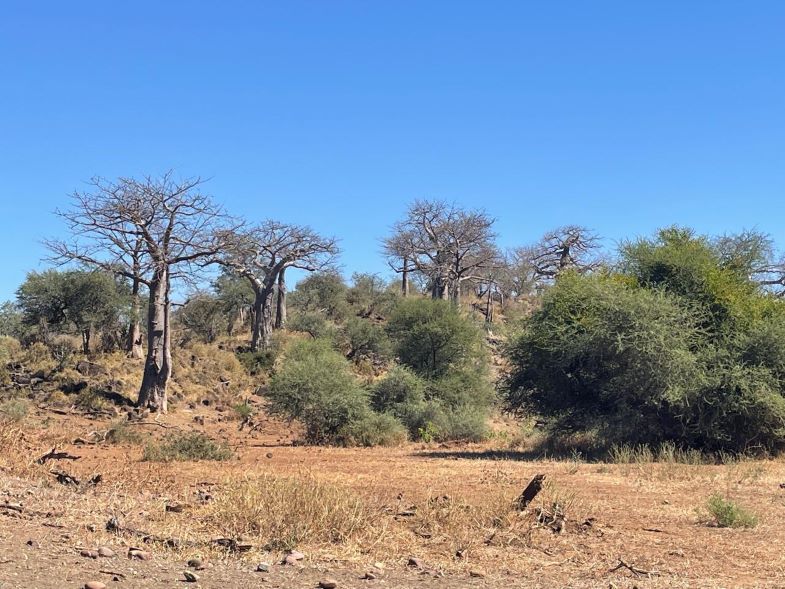We have visited Kruger National Park, usually with foreign visitors in tow, on numerous occasions.
For our foreign visitors, it is usually their only chance – ever – to see the big five in their natural habitats.
That puts the pressure on us and usually means we tend to stay in the southern end of the park, rarely venturing north of Olifants Rest Camp and mostly only going as far up as Satara.
The reason for this is simple – if time is limited, one is more likely to see lion, leopard, and rhino down south than you are further north. The other two – elephant and buffalo – are more easily seen (literally) and so you will come across those anywhere in the park.
On this visit to Kruger, it was only the two of us, so we decided to head up north. The landscape is entirely different north of the Tropic of Capricorn, and to a degree, the bird life changes.

Crook’s Corner
And then there is Crook’s Corner. We had never really taken much notice of the name, but once we became aware of it, we became intrigued. Was it named after a person named Crook, or Crooks, or was it named because it was a place where baddies hid away from The Law?
So once we had settled in at Shingwedzi Camp, we plotted a visit to Crook’s Corner.
Crook’s Corner is just over 100km from Shingwedzi camp. That doesn’t sound like very far but remember, this is a game reserve where the speed at which you can travel is limited. And besides, there is always the possibility of missing out on a once in a lifetime sighting if all you are interested in is getting from A to B!
So, we counted on at least 3hrs to get there and left camp just after the gates opened at 6h00.
A main feature of this drive is the numerous baobab trees one encounters along the way. While baobabs do occur further south, the sight of a bunch of baobabs spread out across a hillside is not an everyday sighting and is quite magnificent to behold.

And then you have several large herds of buffalo that roam that area and so many elephants that you quickly appreciate why Kruger has a giant-sized elephant population problem.

But back to Crook’s Corner. Just short of the Pafuri border post (where you cross t into Mozambique) you turn left onto a small dirt road that meanders through some riverine bush for a few km before ending at the confluence of the Luvuvhu and Limpopo Rivers

This is Crook’s Corner, where South Africa, Mozambique and Zimbabwe meet.
Beyond the Law
And a story board in the parking area that overlooks the river confirms that Crook’s corner is not named after any individual person.

It is so named because in days gone by, it was a place for crooks to hide out, and if necessary, hop the border into one of the other countries if the long arm of the law got too close for comfort.
That function still seems to hold true today.
A Modern Day Crook’s Corner Encounter
As we sat on the wooden rail on the bank above the river, we heard voices in the bush behind us. This was slightly unsettling as the park forbids visitors to get out of their cars except in a few designated areas.
However, all was soon revealed when 2 heavily armed SANParks anti-poaching rangers emerged from the bush. They were patrolling the river to keep an eye out for poachers crossing into the park from either Mozambique or Zimbabwe.
Then 5 minutes later, on the Mozambique side of the river, 5 armed Mozambique soldiers appeared – presumably patrolling their side of the border.
And then our very own “crook” appeared, making full use of the no man’s land that the meandering river has always created. A man and his 2 hunting dogs wandered down the middle of the river in ankle deep water, straight between the 2 sets of armed guards.
Neither could touch him, and even the presence of a squadron of large crocs on the riverbanks didn’t deter him.
It was a slightly surreal experience, but chatting to the SANParks Rangers, not an uncommon occurrence, even today.



